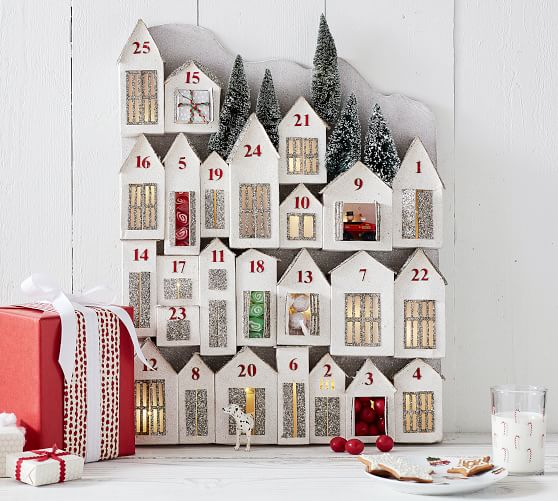Counting Down To Christmas: The History Of The Advent Calendar

------ What Is Advent? ------
Advent is the four-week period beginning on the Sunday nearest the feast day of St. Andrew the Apostle (November 30) through the following three Sundays. Historians estimate that Advent, which derives from the Latin word for coming, has been celebrated since the 4th century. Originally, the period was a time for converts to Christianity to prepare for baptism, but it's now more commonly associated with the anticipation of the anniversary of Christ’s birth on December 25.
------ What Is an Advent Calendar? ------
Advent calendars typically don’t follow the period of Advent described above. Instead, they begin on December 1 and mark the 24 days before Christmas. Today, most Advent calendars include paper doors that open to reveal an image, Bible verse, or piece of chocolate. The tradition dates to the mid-19th century, when German Protestants made chalk marks on doors or lit candles to count the days leading up to Christmas.
A Brief History ------
In the 19th century, the tradition of marking the days until Christmas with chalk or lighting candles was a common practice. But counting down the days until Christmas on an Advent calendar ignores the Saint Andrew tradition and simply begins on December 1st.
The first printed Advent calendar originated in Germany in the early 20th century with Gerhard Lang. When Gerhard was a little boy his mother made him a calendar with 24 small candies attached to cardboard, one for each day before Christmas.
Lang grew up to operate the Reichhold & Lang printing company where he printed the first Advent cardboard calendar with 24 little pictures. A few years later, the company printed the first calendar with the little doors that everyone loves to open.
------ What to Put In an Advent Calendar ------
You could go traditional and make each day's treat a piece of chocolate, a quote, or an image. Or, you could put a modern twist on your Advent calendar and follow a specific, pop culture-related theme.
------ DIY Advent Calendar ------
While it’s already into December, if you’ve been insprired by the fun history of the calendars and want to have one for yourself, why not make one?!
Sure, plenty of big-box stores carry advent calendars in the months before Christmas, and you can also find them at online retailers. But for a festive family craft, consider making your own DIY advent calendar! We rounded up fun options for kids and families; most of them can be created with materials in your craft drawer.
Enjoy! https://www....nt-calendars/
---- Fun Fact:
Some institutions take their versions to the next level. There have been a lot of jaw-dropping Advent calendars over the years. One of the most expensive Advent calendars to ever hit the shelves was a 4-foot, Christmas-tree shaped structure carved from burr elm and walnut wood available through Harrods in 2007. Each of the $50,000 calendar’s 24 compartments housed a piece of organic chocolate from Green & Black, with proceeds going to support cocoa farmers in Belize.
---- Fun Fact:
According to Guinness World Records, the world's largest advent calendar was built in 2007 at the St. Pancras train station in London. The massive calendar, which measured 232 feet and 11 inches tall, and 75 feet and 5 inches wide, celebrated the reopening of the station following a renovation.
Paper calendars are still popular, but versions created from an endless variety of materials such fabric, wood, and string are also widely available. Some offer a surprise behind the door or in a pouch pocket like a piece of candy, a decoration, or a Bible verse.
Share Join Us For A Class | Gift Cards Make A Great Present!

